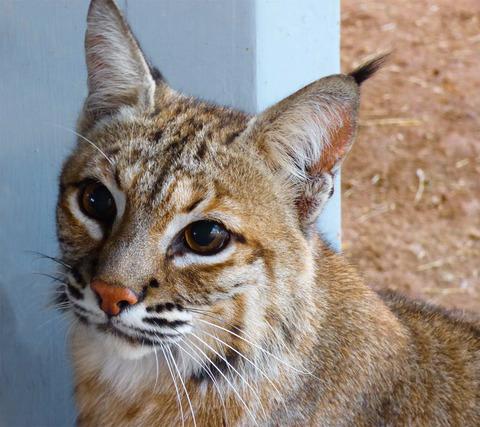当前位置:
X-MOL 学术
›
Ecol. Evol.
›
论文详情
Our official English website, www.x-mol.net, welcomes your
feedback! (Note: you will need to create a separate account there.)
Seed dispersal by carnivores in temperate and tropical dry forests
Ecology and Evolution ( IF 2.3 ) Pub Date : 2021-02-09 , DOI: 10.1002/ece3.7201 Fabián Alejandro Rubalcava-Castillo 1 , Joaquín Sosa-Ramírez 1 , José de Jesús Luna-Ruíz 1 , Arturo Gerardo Valdivia-Flores 1 , Luis Ignacio Íñiguez-Dávalos 2
Ecology and Evolution ( IF 2.3 ) Pub Date : 2021-02-09 , DOI: 10.1002/ece3.7201 Fabián Alejandro Rubalcava-Castillo 1 , Joaquín Sosa-Ramírez 1 , José de Jesús Luna-Ruíz 1 , Arturo Gerardo Valdivia-Flores 1 , Luis Ignacio Íñiguez-Dávalos 2
Affiliation

|
The seed dispersal mechanisms and regeneration of various forest ecosystems can benefit from the actions of carnivores via endozoochory. This study was aimed to evaluate the role of carnivores in endozoochory and diploendozoochory, as well as their effect on seed viability, scarification, and germination in two forest ecosystems: temperate and tropical dry forest. We collected carnivore scat in the Protected Natural Area of Sierra Fría in Aguascalientes, Mexico, for 2 years to determine the abundance and richness of seeds dispersed by each carnivore species, through scat analysis. We assessed seed viability through optical densitometry using X‐rays, analyzed seed scarification by measuring seed coat thickness using a scanning electron microscope, and evaluated seed germination in an experiment as the percentage of seeds germinated per carnivore disperser, plant species, and forest type. In the temperate forest, four plant species (but mainly Arctostaphylos pungens) were dispersed by four mammal species. The gray fox dispersed the highest average number of seeds per scat (66.8 seeds). Bobcat dispersed seeds through diploendozoochory, which was inferred from rabbit (Sylvilagus floridanus) hair detected in their scats. The tropical dry forest presented higher abundance of seeds and richness of dispersed plant species (four species) than in the temperate forest, and the coati dispersed the highest number of seeds (8,639 seeds). Endozoochory and diploendozoochory did not affect viability in thick‐testa seeds (1,480 µm) in temperate forest and thin‐testa seeds (281 µm) in tropical dry forest. Endozoochory improved the selective germination of seeds. Nine plant species were dispersed by endozoochory, but only one species (Juniperus sp.) by diploendozoochory. These results suggest that carnivores can perform an important ecological function by dispersing a great abundance of seeds, scarifying these seeds causing the formation of holes and cracks in the testas without affecting viability, and promoting the selective germination of seeds.
中文翻译:

温带和热带干燥森林中食肉动物的种子传播
各种森林生态系统的种子传播机制和再生可以受益于食肉动物通过动物体内的活动。本研究旨在评估食肉动物在内动物和双内动物中的作用,以及它们对温带和热带干燥森林这两种森林生态系统中种子活力、松土和发芽的影响。我们在墨西哥阿瓜斯卡连特斯的弗里亚山脉自然保护区收集了食肉动物的粪便,历时两年,通过粪便分析来确定每种食肉动物传播的种子的丰度和丰富度。我们通过使用 X 射线的光密度测定法评估种子活力,通过使用扫描电子显微镜测量种皮厚度来分析种子的划痕,并在实验中评估种子发芽率,即每种食肉动物传播者、植物种类和森林类型的种子发芽百分比。在温带森林中,四种植物(但主要是Arctostaphylos pungens )由四种哺乳动物传播。灰狐每次粪便散布的平均种子数量最高(66.8 颗)。山猫通过双内动物传播种子,这是从其粪便中检测到的兔子( Sylvilagus floridanus )毛发推断出来的。热带干燥森林的种子丰度和分散植物种类(四种)的丰富度高于温带森林,长鼻浣熊传播的种子数量最多(8,639 粒)。内生动物和双内动物不影响温带森林厚种皮种子(1,480 µm)和热带干燥森林薄种皮种子(281 µm)的活力。内生动物提高了种子的选择性发芽。九种植物通过动物体内传播,但只有一种( Juniperus sp.)。)由双内动物。这些结果表明,食肉动物可以通过散布大量种子、使这些种子松散导致种皮中形成孔洞和裂缝而不影响活力以及促进种子的选择性发芽来发挥重要的生态功能。
更新日期:2021-02-09
中文翻译:

温带和热带干燥森林中食肉动物的种子传播
各种森林生态系统的种子传播机制和再生可以受益于食肉动物通过动物体内的活动。本研究旨在评估食肉动物在内动物和双内动物中的作用,以及它们对温带和热带干燥森林这两种森林生态系统中种子活力、松土和发芽的影响。我们在墨西哥阿瓜斯卡连特斯的弗里亚山脉自然保护区收集了食肉动物的粪便,历时两年,通过粪便分析来确定每种食肉动物传播的种子的丰度和丰富度。我们通过使用 X 射线的光密度测定法评估种子活力,通过使用扫描电子显微镜测量种皮厚度来分析种子的划痕,并在实验中评估种子发芽率,即每种食肉动物传播者、植物种类和森林类型的种子发芽百分比。在温带森林中,四种植物(但主要是Arctostaphylos pungens )由四种哺乳动物传播。灰狐每次粪便散布的平均种子数量最高(66.8 颗)。山猫通过双内动物传播种子,这是从其粪便中检测到的兔子( Sylvilagus floridanus )毛发推断出来的。热带干燥森林的种子丰度和分散植物种类(四种)的丰富度高于温带森林,长鼻浣熊传播的种子数量最多(8,639 粒)。内生动物和双内动物不影响温带森林厚种皮种子(1,480 µm)和热带干燥森林薄种皮种子(281 µm)的活力。内生动物提高了种子的选择性发芽。九种植物通过动物体内传播,但只有一种( Juniperus sp.)。)由双内动物。这些结果表明,食肉动物可以通过散布大量种子、使这些种子松散导致种皮中形成孔洞和裂缝而不影响活力以及促进种子的选择性发芽来发挥重要的生态功能。















































 京公网安备 11010802027423号
京公网安备 11010802027423号